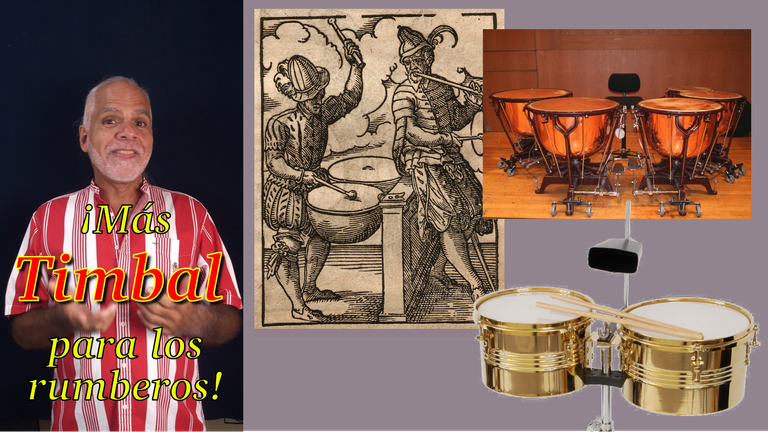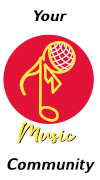It is striking to most people that one of the most popular percussion instruments in Latin music has the same name as another instrument used in academic orchestras: the timbal (or in the plural, timbales), also called timpani in classical music.
Well, to the surprise of many, the origin of both instruments is far back in time, because in the fifteenth century (yes, six centuries ago) it was already popular, but not exactly to make people dance.
In ancient times, it was common to use martial music in battles to encourage the troops and to frighten or morally weaken the enemy. It was customary to use instruments of force and solemnity for greater effect, including trumpets and drums. One of the instruments used was the kettledrum, a drum with a strong and deep sound.
This instrument, sometimes called timbales or timpani, soon became part of classical orchestras. It was in this field that it traveled from France to one of its colonies in the Caribbean, Haiti, and there it accompanied a rhythm of great acceptance for the dance, as it is the French contra dance.
From Haiti it went to Cuba and that same contra danza gave rise to the birth of the danzón (one of the musical forms born on the island) and in this way the timbales began to adapt to the new environment, the new sounds, until they became the timbales as we know them today within Cuban music and from there it made the leap to the rest of the Caribbean and the United States, becoming one of the pillars of all Caribbean music and beyond, as it soon began to be used in other musical genres, including jazz, pop and rock.
One of the first musicians to highlight the timbales as a solo instrument was the American musician of Puerto Rican descent, Tito Puente, who is undoubtedly one of the greatest exponents of this instrument.
This instrument developed its own technique based on its new dimensions (much smaller than its orchestral predecessors) and, in the style of the "drum set", added new instruments to be played by the timbalero, such as bells, jam blocks and cymbals, among others.
Although in some groups this instrument is the main source of rhythm, it is perfectly able to share its space with the tumbadoras, the bongo and even a drum set.
Because of its particular sound, which gives the music an enormous power, and because of the resources it offers, the timbales are also included in my salsa project, as one of its protagonists.

Resulta un elemento llamativo para la mayoría de las personas, que uno de los instrumentos de percusión más populares en la música latina, tenga el mismo nombre que otro instrumento usado en las orquestas académicas: el timbal (o en plural, timbales), también llamado a nivel clásico tímpani.
Pues, para sorpresa de muchos, se trata de un origen para ambos instrumentos, muy atrás en el tiempo, pues ya para el siglo XV (sí, hace seis siglos) era popular, pero no precisamente para hacer bailar.
Antiguamente era común en las batallas, usar música de fuerza para animar a las tropas y para asustar o debilitar moralmente al enemigo. Allí era común el uso de instrumentos de fuerza y solemnidad para que surtieran mayor efecto, entre esos destacaban, trompetas y tambores. Uno de los empleados era precisamente el tímpani, tambor de sonido fuerte y profundo.
Este instrumento, llamado indistintamente timbales o tímpani, pasó pronto a engrosar las orquestas clásicas. Fue en ese campo que viajó de Francia a una de sus colonias en el Caribe, a Haití, y allí viajó acompañando un ritmo de gran aceptación para el baile, como lo es la contradanza francesa.
De Haití pasó a Cuba y, precisamente esa misma contradanza, dio pie al nacimiento del danzón (una de las formas musicales nacidas en la isla) y por esa vía los timbales empezaron a adaptarse al nuevo entorno, los nuevos sonidos, hasta convertirse en los timbales, tal como los conocemos hoy dentro de la música cubana y que de allí dio el salto hacia el resto del Caribe y Estados Unidos, convirtiéndose en uno de los pilares de toda la música caribeña y más allá, pues pronto empezó a usarse en otros géneros musicales, incluidos el jazz, el pop y el rock.
Uno de los primeros músicos que hizo destacar a los timbales como instrumento solista, fue el músico estadounidense, de ascendencia puertorriqueña, Tito Puente, quien, sin lugar a dudas, ha sido uno de los máximos exponentes de este instrumento.
Este instrumento fue desarrollando su propia técnica a partir de sus nuevas dimensiones (mucho más pequeñas que sus antecesores orquestales) y, al estilo de la batería, fue agregando nuevos instrumentos a ser ejecutados por el timbalero, tales como campanas, jam blocks y platillos, entre otros.
Aunque en algunas agrupaciones, este instrumento llevo el peso principal del ritmo, puede perfectamente compartir su espacio con las tumbadoras, el bongó e incluso con la batería.
Por su sonido tan particular, que le da una enorme fuerza a la música, y por los recursos que ofrece, también los timbales están incluidos en mi proyecto de salsa, como uno de sus protagonistas.

Fuente de las imágenes - Image sources
[1] - [2] - [3] - [4]



Vote la-colmena for witness
By @ylich
http://ylich.com
Spotify
Buy Ylich's "Pa' los bailadores" NFT at nfttunz.io
▶️ 3Speak

